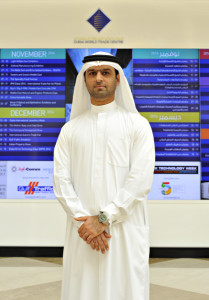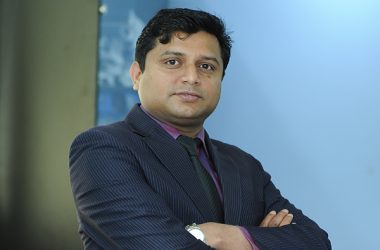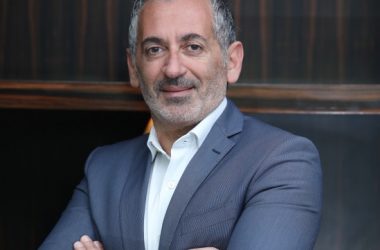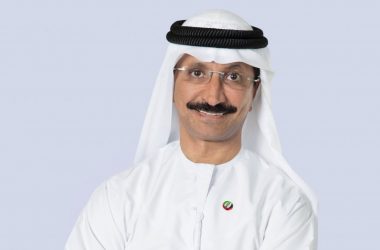
As Dubai becomes the centre of business trade in the Middle East, Dubai World Trade Centre stands at the heart of this growing city. As the number of visitors, exhibitors and events continued to grow, it became clear to the IT team at DWTC that is was time to streamline their technology infrastructure.
Dubai World Trade Centre (DWTC) is renowned for its world class events, venues, conferences and exhibitions. The epicentre of business tourism in the Middle East, DWTC can confidently claim credit for a great deal of the growth in the international trade industry in the region. Since the creation of its first tower in 1979, DWTC has been a vital part of the Dubai economy, creating around 36,000 jobs in 2011 alone, and attracting revenue from international businesses and visitors.
Dubai has undoubtedly grown since the inception of the DWTC and so too have the demands of exhibitors, vendors and visitors. It is with this in mind that Farid Farouq, Vice President, IT, Dubai World Trade Centre, realised that the IT infrastructure of the event giant needed to be streamlined. “We were doing many things manually,” Farouq recalls, “we have always provided an extremely high level of customer service, but I knew we could do it even more efficiently.”
With over 500 events annually ranging from exhibitions, conferences, meetings, concerts, and even weddings, Farouq realised that the network infrastructure must be agile, reliable, resilient, and able to quickly adapt to fast changing requirements. “The best way forward to maintain a converged, secured and highly adaptable infrastructure is by introducing a new network concept throughout the convention centre,” he says.
Indeed, when DWTC went in search of a solution that would provide the ability to support its extremely demanding and dynamic business requirements, Farouq knew that the project would be enormous. Not only would the job entail long hours and attention to detail, but as the MENASA region’s largest venue operator and event organiser, DWTC truly cannot afford a moment of downtime. The search for a vendor that had the technology and would be up to the task was the first step in what would be an important journey.
Farouq then began his search for a solution that would provide the ability to meet the dynamic business needs of DWTC. After accessing what the full project would entail, it was clear that only a next-generation, virtualised network infrastructure would be able to deliver on DWTC’s stringent business requirements. In addition to logistical sense, the project had to make business sense. To assess the bottom-line, a business case with the feasibility study was developed to secure the necessary project funding. “It’s essential that IT and business work together on projects such as this,” says Farouq, “without that type of communication, a project cannot succeed.”
Once Farouq knew what DWTC needed, it was a matter of finding the appropriate vendor. Initial technology tests and proof of concept sessions were conducted with various vendors to ensure that they understood the requirements of the project and to assess their overall fit with the project. During this time, the technology department at DWTC was drafting the project plan, including the scope of work, expected schedule of delivery and high level design.
When the search was finally over, one vendor stood out as the clear leader – Avaya’s offering was the most suitable solution. Although others had technologies very similar to what DWTC required, Avaya came through first both technically and commercially. “Other vendors were developing the technology that Avaya already had,” says Farouq, “we went with Avaya because they had the technologies we needed to streamline our IT infrastructure and they had it available at that moment.”
Shortly following the tap to Avaya, to implement what would be perhaps the most technically difficult IT project the DWTC had ever embarked upon, a kick-off meeting was held with all interested stakeholders and key players. There, they developed a solid schedule for the project that would work well with DWTC’s packed event calendar.
A four stage roll-out plan was adopted. The implementation began with the migration of access switches. “This phase was the most challenging,” says Farouq, “it involved the replacement of over 130 access switches scattered across the venue. It was a tedious and labour-intensive task that involved not only the technical aspects, but manoeuvring the events schedule to find empty slots.”
Following the migration of access switches, Avaya and the team at DWTC moved on to the migration of core and distribution network elements. The challenge faced in this phase was the scale of the downtime required to complete each site. Each distribution location was connected to tens of access switches. As such, engineering the shift from the previous vendor’s switches to the new Avaya ones was a challenge as the implementation could not be done during show hours.
When all the switches had been migrated, it was time to move the data centre network to the new system. The planning and design for the migration of the data centre network took a great deal of detailed work, recalls Farouq. “Each interface connected to each server and device within the data centre must be well documented. In addition, its migration must be as accurate as possible to avoid any interruption after the change, minimising services’ outage,” he says.
With all of the major parts in place, the final task was to address security issues. With over 2.2 million trade delegates and attendees visiting the venue each year using the DWTC systems, security is paramount. One chink in the security armour could mean disaster. The crux of this project was the delivery and configuration of the Intrusion Prevention Systems which are key in the protection of data centre servers from any malicious activity.
The result of the hard work and planning on the part of DWTC and Avaya were instantly realised. The new system is a fully integrated, end-to-end network virtualisation solution. The new technology helps automate service provisioning, improve performance, and reduce network outages. “With this deployment, Dubai World Trade Centre is striving to deliver best-in-class interruption-free networking services to all its clients and across all applications,” says Farouq.
As a visitor to DWTC, one might not be immediately aware of all the changes in its IT infrastructure. However, behind the scenes, the changes are quite clear. “Thousands of network switch ports, hundreds of access switches, tens of core network elements serving over 2.2 million visitors and exhibitors with their devices and applications, all work seamlessly during mega shows such as Gitex, Gulfood and Arab Health, yearlong with no interruptions,” says Farouq.
The end result is clear, without the road blocks of manual systems and the anxiety of potential downtime, the IT department at DWTC is able to concentrate on creating great opportunities for businesses to connect, worrying less about “data networks” and more about “human networks”.





